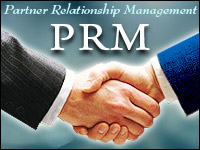
Partner Relationship Management gives a lot of attention to the vendor and partner relationship, and it should. But it’s worth remembering that as important as this relationship is, the one that really counts involves an end customer. So what does the end customer need from a channel partner that a PRM system can uniquely provide?
Many of us think of PRM systems as tools for managing the intricate relationship between a vendor and the reseller channel, which is certainly true. Channels run on lead generation and distribution, marketing funds delivered, lead registration and a lot more — all things that happen between the vendor and the partners. But a PRM system also has to penetrate the channel between the partner and the end customer to be maximally effective.
I’d say the most important partner deliverable is intangible — trust. A customer needs to feel good about a purchase; without that, nothing else matters. When the deliverables come from a chain of vendors, i.e. the partner and the OEM, that’s even more important.
Feeling good about a purchase and the decision to work with a particular vendor combination means the customer has developed a bit of trust based on evidence presented before and during the sales process.
Evidence takes the form of products and services, of course, but also many things that may be less than obvious. A close relationship between the vendor and partner and the ability to produce a finished solution without resorting to additional fees for unplanned additions is even more evidence. So is the “single throat to choke” but let’s hope we don’t get there.
Here are some attributes of PRM systems that can drive trust.
Co-Branding and Vendor Referral
Customers enter markets looking for solutions, not components, so it’s important that the team made up of the vendor and channel partner present as a single solution provider. Even if the vendor is in the business of selling raw materials or sub-assemblies, to the customer that’s a solution to a business problem.
Co-branding and vendor referral are instrumental in demonstrating a solutions orientation. Co-branding shows the customer that the solution represented by the partner is backed up by the original manufacturer, which adds strength to what could look like a wobbly association of convenience if not handled right.
Vendor referral is a great way to ensure that the customer identifies a solution provider with the right assortment of market knowledge, geographical presence, and experience — all of which generate trust.
Having a choice of partners also gives the customer the feeling of being in control because they can select the partner that’s most compatible with their goals and objectives.
Marketing Programs Designed Around a Particular Partner
There’s nothing worse than having too many partners pitching the same customer because it inevitably results in a price war. When this happens, the winning bidder often doesn’t have enough margin left in the deal to provide the ongoing service and support that makes a customer successful. Vendor referral systems can help reduce the cattle call aspect of this situation, but so can a well-crafted marketing program designed around a single partner.
In this scenario, a vendor will develop marketing materials that partners can further craft to their needs, even if the only thing they do is add a logo. Every partner has something unique to offer, whether it’s implementation expertise in a particular niche, or geographic reach to support a remote customer.
The most successful partners are those who market themselves and their expertise, because that’s what elevates commodity products to real services — and possibly experiences. Whatever it is, when a vendor produces marketing materials and supports easy co-branding, it gives the partner more flexibility to tout the things that uniquely qualify it.
It all adds up to providing the customer with the impression of a competent solution provider — instead of a loose group of component suppliers — and that engenders trust. So whether you are a business in a channel, a vendor running a channel, or you are thinking of becoming one, your PRM system will do a lot more than simply keeping tabs on various back office aspects of the business.
Of course the back office is important, but to whom? As I said at the beginning, that might be useful in managing the vendor-partner relationships but everyone also needs to be mindful of the end customer. These days, that’s a strategic necessity.
























































